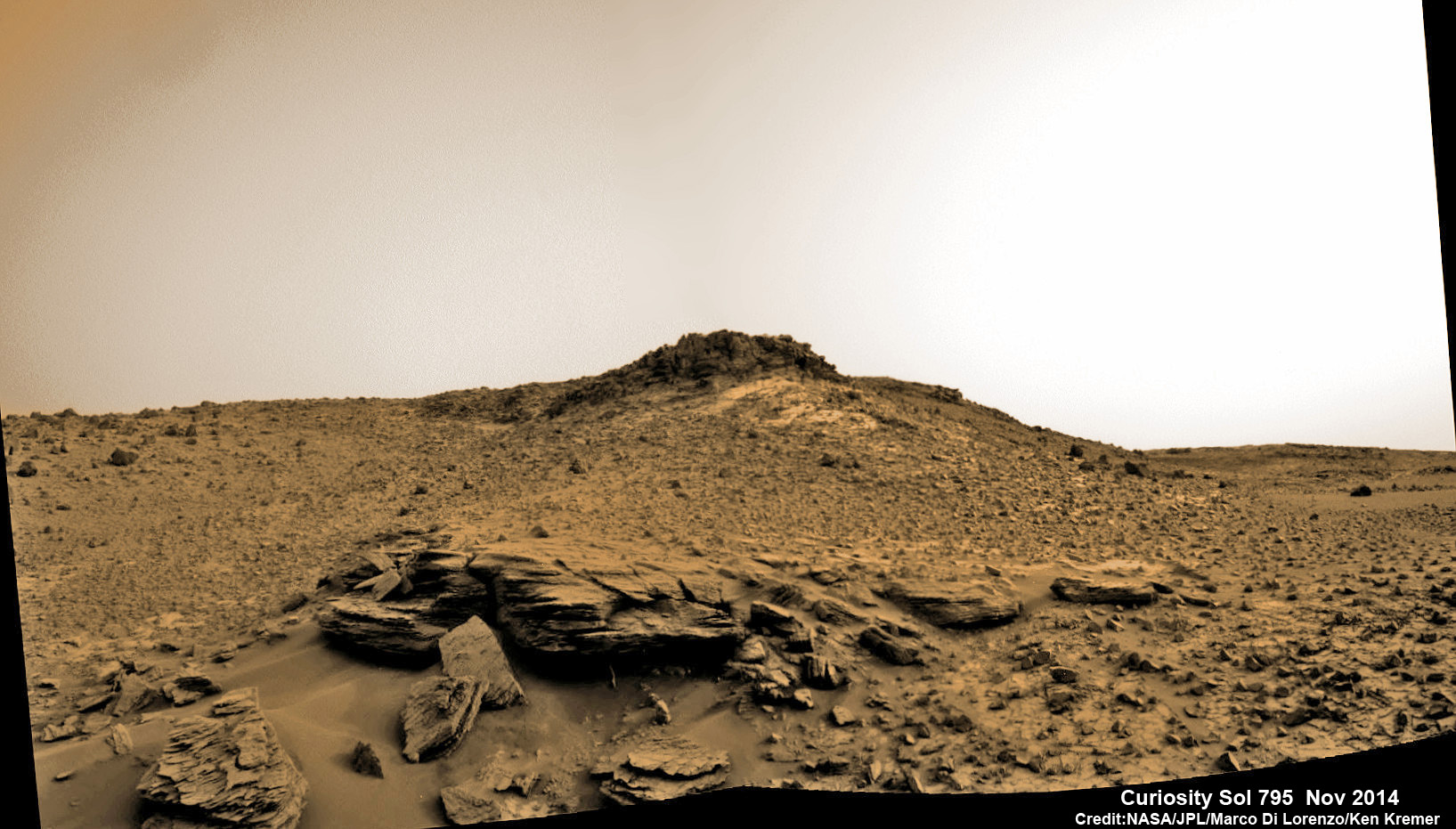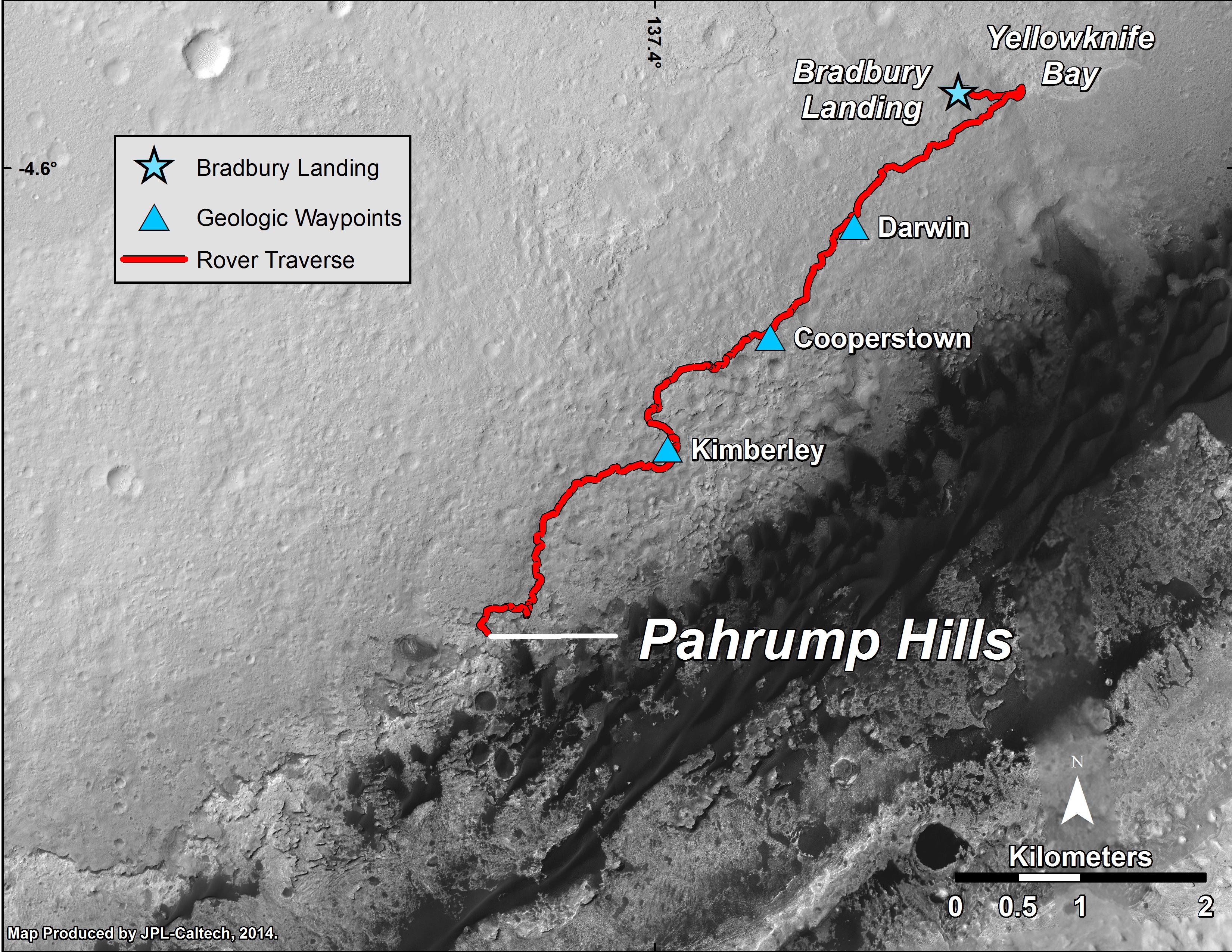
NASA’s Curiosity Mars Science Laboratory rover departed Earth three years ago today, blazing a spectacular path to the Red Planet atop a United Launch Alliance Atlas V rocket on Nov. 26, 2011, from Cape Canaveral Air Force Station, Fla.
She even took time to tweet holiday well-wishes to all her fans back home!
“3 years ago, I left Earth for Mars. Wishing you safe travels this #Thanksgiving, too!”
The one-ton rover embarked on a truly epic ongoing mission in search of life’s ingredients and habitats that could have sparked the creation and evolution of Martian microbes—and sustain their continued existence—if they ever formed upon the fourth rock from the Sun at some point over the past four billion years or so.
Curiosity’s science goals are rather similar in fact to those of another stupendous ongoing mission—the European Space Agency’s Rosetta orbiter and Philae comet lander duet now investigating the far flung comet 67P/Churyumov–Gerasimenko traveling way beyond Mars and 500 million kilometers (300 million miles) distant from Earth on another mission of cutting edge science to elucidate our origins.
Barely two weeks ago, on Nov. 12, the Philae comet lander discovered organic molecules—the building blocks of life—following a harrowing triple touchdown.
The six-wheeled Curiosity rover was targeted to land astride a humongous Martian mountain named Mount Sharp, towering 3.4 miles (5.5 kilometers) into the Martian sky inside Gale Crater.
Following a nine-month-long interplanetary journey, Curiosity hit the Martian atmosphere at about 13,000 mph and survived the “Seven Minutes of Terror” and scorching temperatures while plummeting through the atmosphere.
Then came the nailbiting and unprecedented rocket-assisted sky crane maneuver during the final stages of the descent, leading to her death defying touchdown on the Red Planet a little over two years ago, on Aug. 6, 2012, inside Gale Crater.
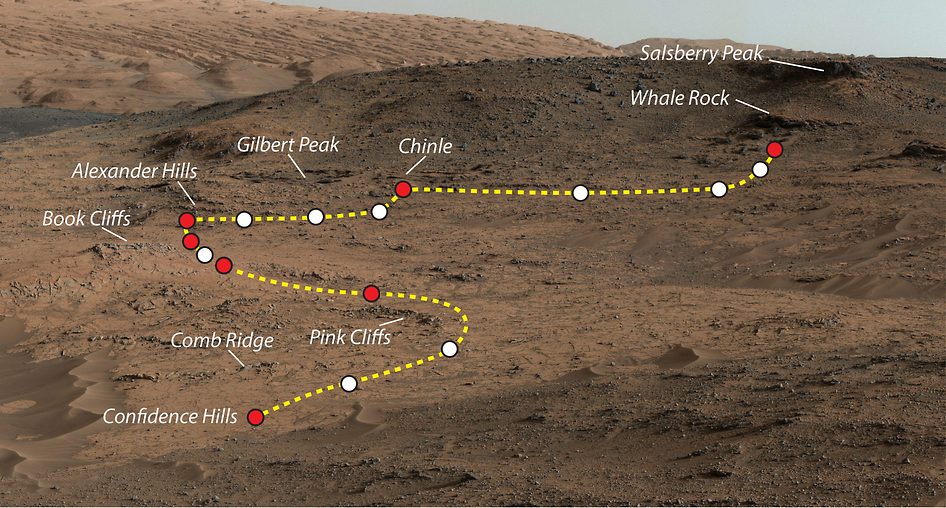
The mammoth, layered mountain stands taller than America’s Mount Rainier and dominates most of the Gale Crater landing site and is Curiosity’s primary destination of the mission.
Since her safe touchdown at Bradbury Landing, Curiosity has been on an epic trek of more than 5 miles (8 kilometers) miles across the crater floor, while making a multi-month detour in early 2013 to a scientifically interesting region called “Yellowknife Bay.”
The gamble paid off handsomely, when an analysis of history’s first-ever interplanetary drill samples at the “John Klein” outcrop revealed the presence of the phyllosilicate minerals, the chemical ingredients necessary to sustain life, which is indicative of a habitable zone on Mars.
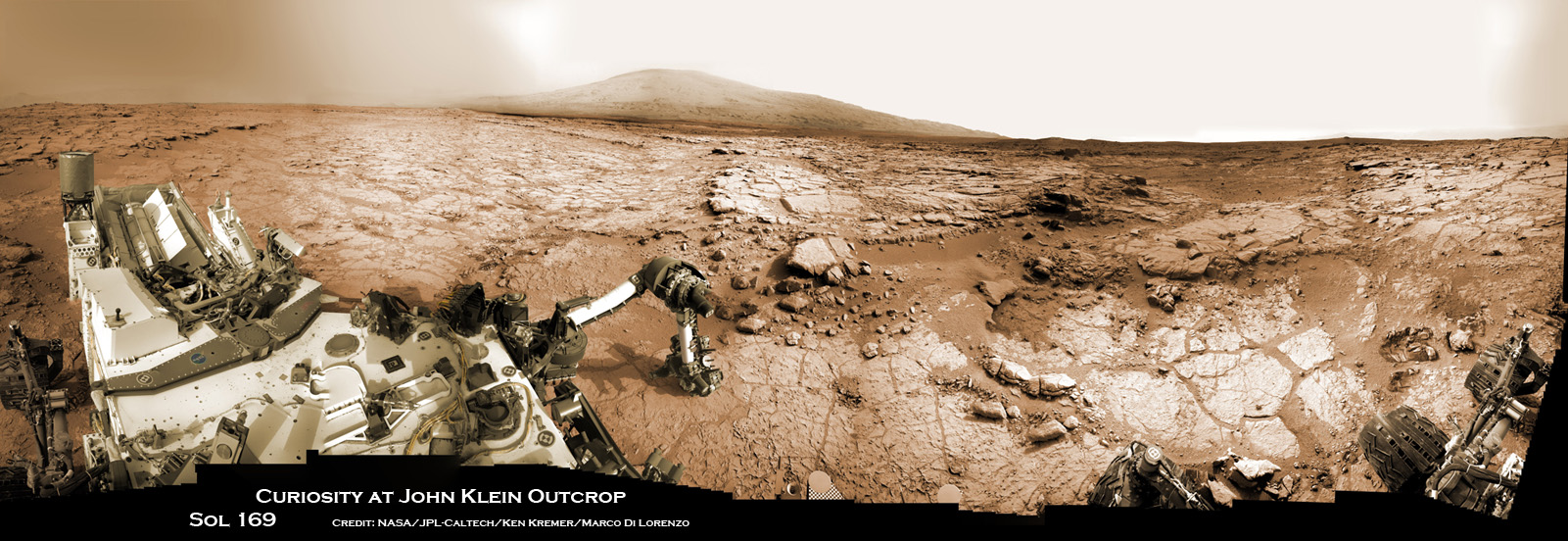
Today, Curiosity has reached the foothills of Mount Sharp in a region dubbed the “Pahrump Hills” and has spent this Fall conducting what’s known to geologists as a “walkabout.”
She’s on a reconnaissance mission to locate targets of scientific interest to investigate in the coming weeks and months.
But before the big walkabout, the rover first collected a drill sample from a target called “Confidence Hills” within the outcrop area to better assess the science potential.
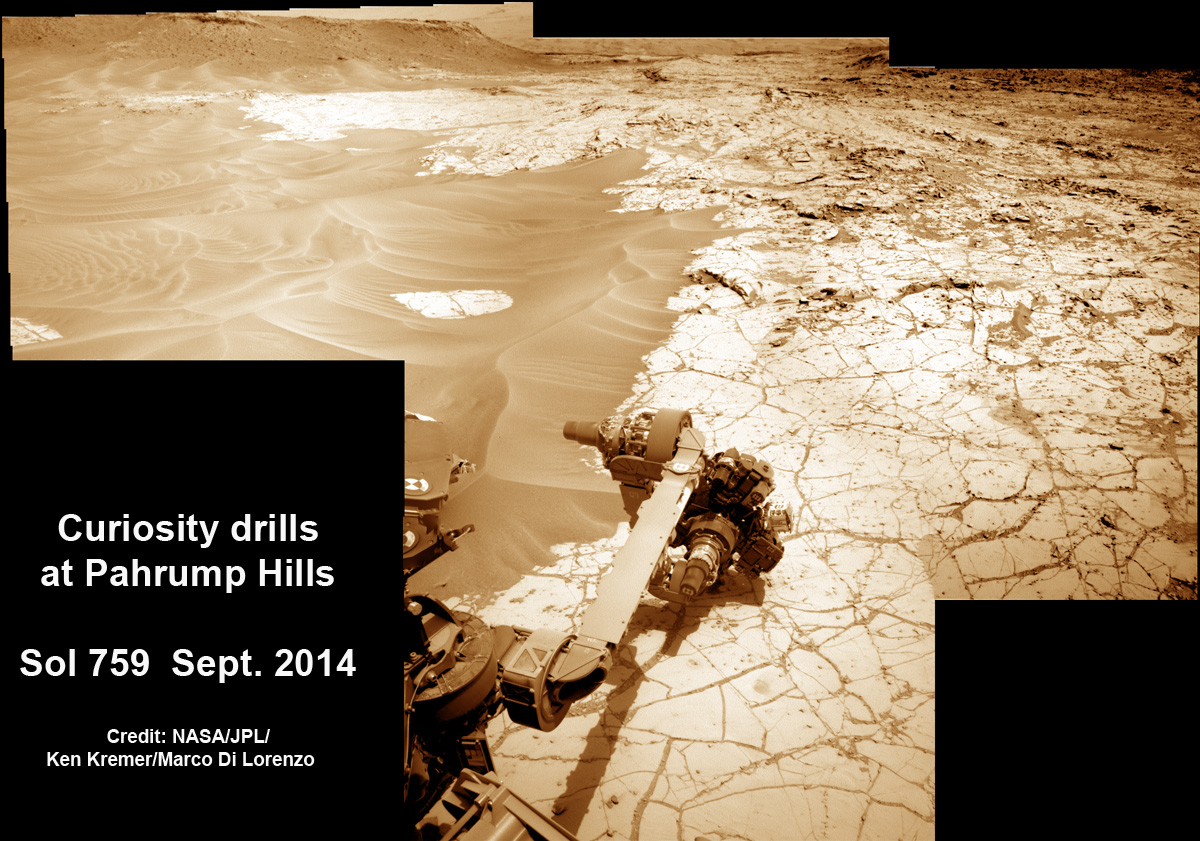
Now the rover has begun a second pass to carefully inspect selected rocks in the outcrop in more detail.
In its first pass up this outcrop, Curiosity drove about 360 feet (110 meters) and scouted sites ranging about 30 feet (9 meters) in elevation. It evaluated potential study targets from a distance with mast-mounted cameras and a laser-firing spectrometer, according to NASA.
“We see a diversity of textures in this outcrop — some parts finely layered and fine-grained, others more blocky with erosion-resistant ledges,” said Curiosity Deputy Project Scientist Ashwin Vasavada of NASA’s Jet Propulsion Laboratory, Pasadena, Calif., in a statement.
“Overlaid on that structure are compositional variations. Some of those variations were detected with our spectrometer. Others show themselves as apparent differences in cementation or as mineral veins. There’s a lot to study here.”
The rover is using all the instruments at its disposal during her second trip around the outcrop to assess the best targets for further up-close scrutiny and as potential candidates for drilling and onboard sample analysis during a third go round of the outcrop.
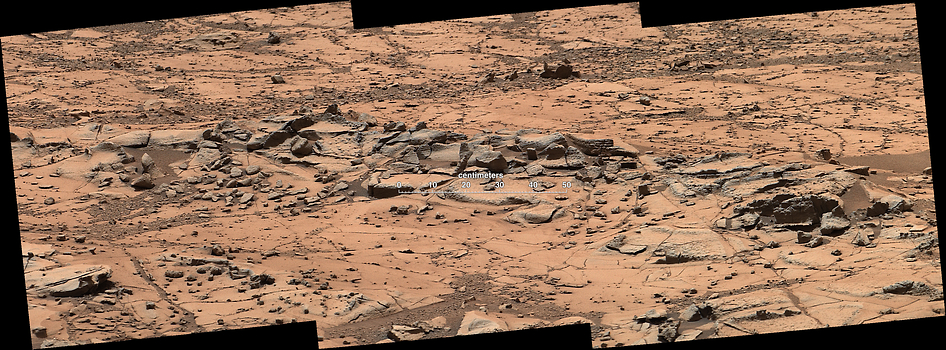
“The variations we’ve seen so far tell us that the environment was changing over time, both as the sediments were laid down and also after they hardened into bedrock,” Vasavada said.
“We have selected targets that we think give us the best chance of answering questions about how the sediments were deposited — in standing water? flowing water? sand blowing in the wind? — and about the composition during deposition and later changes.”
So far Curiosity’s odometer totals over 5.5 miles (9.0 kilometers) since landing inside Gale Crater on Mars in August 2012.
She has taken some 203,000 images during over 820 Sols of exploration.
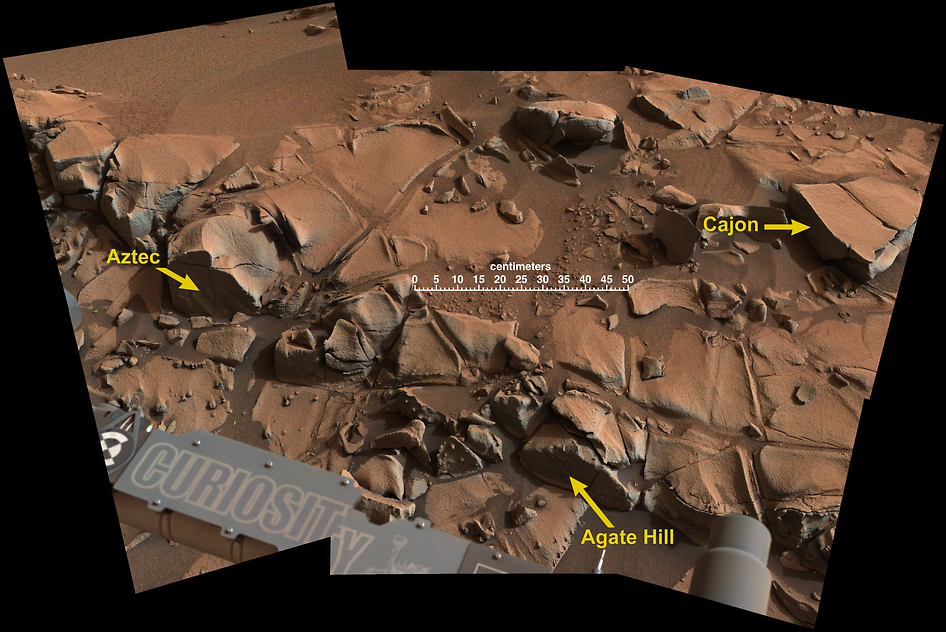
Stay tuned here for continuing updates.
Want to keep up-to-date with all things space? Be sure to “Like” AmericaSpace on Facebook and follow us on Twitter: @AmericaSpace
